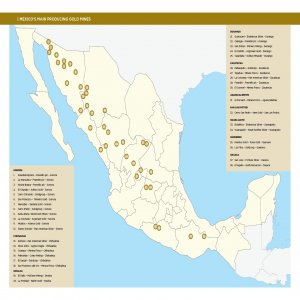Polyethylene Cables Far Tougher than Common Rubber

STORY INLINE POST
A number of key industry players are currently vying for narrow market shares within competitive mining segments. One such segment is that of mining cables, which sees strong but similar product offerings presented by many viable companies. These rivals may be tussling for market share, resulting in a necessity for innovative products that can gain traction in this competitive environment. TeleFonika Cable Americas’ (TF) strategy when entering the Mexican market was to offer a range of cable products that supported safety in mines, something which many of their competitors-to-be seemed to lack in their portfolios.
Traditionally, cables that were applied to the mining industry used PVC or CPE rubber as a protective jacket. The problem with such materials is that cables in mines are often twisted, dragged, rolled over sharp rocks, or dragged through water, causing them to quickly corrode or break. René Molina, Sales Representative of TeleFonika Cable Americas explains some of the more serious cabling issues that mining companies faced in the past. “About 10 years ago, a cable for the mining industry was replaced on average every four months. A cable roll of about 90km costs about US$30,000. Therefore, costs rapidly add up if a company needs to replace its cables every three or four months, especially because most mines go through about 20 rolls of cable a year, at best.” Knowing this, TF saw a niche in the market for cables specially designed to be more resistant. To provide this in mines, the company abandoned the use of rubber and switched to a polyethylene protective jacket.
Polyethylene is able to withstand three times as much stretching as other cables, it does not form bubbles caused by the twisting of cables, and it is able to withstand the pressure of falling rocks. The cables protected by this material are resistant to abrasion and collision and are far more resilient than those covered in plastic. However, there is one drawback. While plastic covered cables are easily opened with knives, polyethylene cables are much harder and special tools are needed to cut them. Even so, when compared to the benefits of the product, this hardly counts as a drawback at all, states Molina. Some of TF’s major competitors, such as Condumex, Southwire, and Nexans, soon followed the company’s example and began producing their own polyethylene cables
Strength and resistance are important, but practical damage-preventing measures can also increase the life of such cables. In this aspect, cable visibility is an important consideration as if it makes miners less likely to damage them. For this reason, TF started to install fluorescent reflective strips on the cables to reflect any light that hits them, even in total darkness. These same reflective strips are used in the aeronautic industry for emergency lighting purposes. They are capable of storing small amounts of light which make the cable visible for a longer period of time. This product has been tested at the Milpillas mine in Sonora which is owned by Peñoles. TF is now working on a three- to four-year development cycle that will integrate this polyethylene jackets technology, as well as implementing a LED lighting system for the cables. One of the main challenges that TF found when promoting its products was the frugality of its potential clients. “Our polyethylene cables are 15% more expensive than regular rubber cables, representing a considerable price increase for mines with a high volume of cabling requirements. However, once we demonstrated that our products lasted six months longer than conventional cables, the price was no longer a deal breaker,” explains Molina. Another strategy that TF adopted when entering Mexico was to approach companies that did not have a specific budget set aside for cabling. As a test, TF provided them with 100-120m of cabling for free to test out on their operations. When contacted again six months later, Molina says these companies usually ordered around 1,000m of cable after seeing how strong and durable the product was. “The main thing miners are looking for is a resilient jacket,” Molina continues. “They want the conductive material in the cable to withstand harsh conditions, in order to increase safety, which is naturally a common concern for mining clients.” Safety and resilience are resonant themes in the mining industry since they can result in high financial and human capital costs when things go awry. This is why TeleFonika also pays special attention to its compliance with any international regulations that exist for the products they manufacture. The IEEE norms and standards established by the Occupational Safety and Health Associations in the US outline the required characteristics of conductors, all of which must be submitted with a pre-determined diameter and specific caliber. “It is extremely important to regulate safety on any equipment being used by mine workers. Avoidance and prevention of accidents is one of our principal goals when developing new cabling products,” concludes Molina.






















